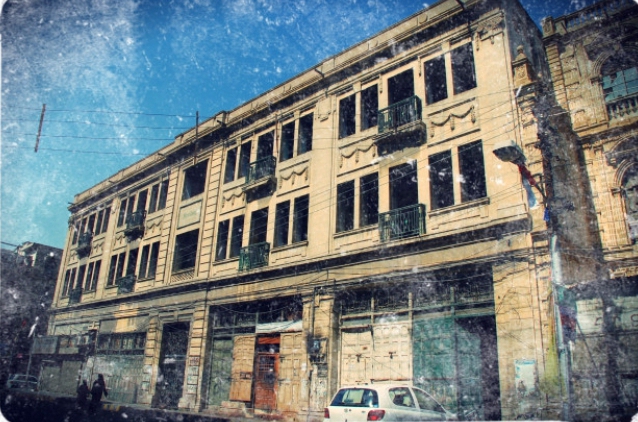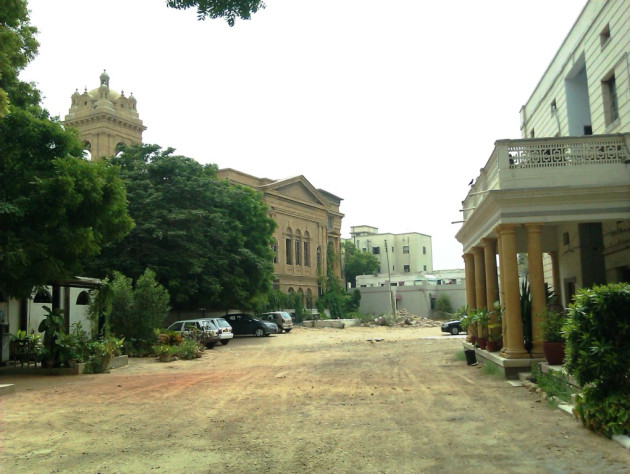
From very first day at Sevakunj Hostel, he came under the influence of Tablighi Jamaat, as one of his roommate, and the Prefect of hostel, hailing from Azad Kashmir and Gilgit respectively, were the members of that organization, who used to take him to the mosques of Tablighi school of thought and also to Tablighi congregations.
Thassim Akbar
I left home for the first time at the age of nineteen, bound for Karachi, Pakistan on the 5th February, 1971. I had been awarded a Pakistan Government Cultural Scholarship for Undergraduate Studies in Engineering. My first choice was Marine Engineering but as that was not available; I opted for Mechanical Engineering at NED Engineering College. With me was another Sri Lankan student, Gamini Bamunuwitharne who opted for Electrical Engineering.
Our Air Ceylon Trident Flight landed at Karachi where we were met by Mr. Farid who was the Administrative Officer at NED. We were taken to Sevakunj Hostel in Arambagh which was one of two hostels housing NED students at that time. We were put in a room for three. Our partner was Muhammed Bashir a third year undergrad in Civil Engineering from Azad Kashmir. He was a bearded religious person and every time after the Adhan (Prayer call), he would take his miswak and cap and leave the room heading for the Masjid. At that time I was not religious and did not pray although I was inclined towards religion. Later on a tall imposing person with a long beard and leather cap visited our room. He was Muhammed Amir, the head prefect of the hostel. He hailed from Gilgit. Next day being Eid, I wanted to attend the festival prayers and he promised to take me along.
So began our stay at Karachi and Pakistan. It was a bit of a culture shock for me, having lived in at home all my life in Ceylon, my father being the Chief Water Works Engineer, Colombo, and following a more westernized life style. However I was made to feel at home and developed a close friendship with our Pakistani friends especially Muhammed Amir from Gilgit and his roommate Ghulam Murtaza Shah from Jehlum who helped us to settle down. We would eat Kinoo and other fruits and order tea from the café down stairs which was run by people of the Bahai faith. In fact Sevakunj was also owned by Bahai’s I think, and they had a free medical clinic once a week. Also they ran a reading room downstairs where we could read all the daily newspapers. In those days this was our only contact with the outside world when there was no internet and TV was limited. Also letters would take about 2 weeks to go to Sri Lanka and another two weeks to get a reply. So you can imagine how isolated we were. No mobiles, no telephone etc. So it was really great to enjoy the hospitality and friendship with the other boys in the hostel from different parts of Pakistan and some other countries as well. I would say that at that time Pakistan was a well-knit society free of the current divisions and internal strife.
So on Eid we went early to an open place somewhere near the Quad-i-Azam Mausoleum. The prayers were conducted by Moulana Ehthishamul Haq Thanvi. His discourse in Urdu after the prayers was most pleasant to listen to. Urdu is quite a melodious rhyming language. There after we visited various friends of Amir, Bashir and Ghulam Murtaza. Mostly these were religious people connected to the Tablighi movement. Close to the Sevakunj Hostel was the Arambagh Masijid. It was a beautiful looking red and white marbled construction. On the rear side it opened to the Aram Bagh which was a park area without much greenery. Across the park on the other side was the Bab-ul-Islam Masjid. This was a well carpeted and well maintained mosque. We used to attend prayers in both Masjids and more often at Bab-ul-Islam. I was told that there were some differences between the two schools of Islamic learning viz. Deoband and Brelvy. Hence there was some friction between these two. However in Ceylon we had no such experience at that time although it has surfaced now in Sri Lanka but not to that degree.

So life for me revolved around the Hostel, mosque and the university. NED stands for Nadirshaw Edulji Dinshaw, a Parsi philanthropist who founded the college. Those days there was a Parsi fire temple at the corner near Pakistan Chowk, as the place was known. The Chowk was a circular space at the middle of the junction of about five or six roads that converged at this point. The Chowk was often occupied by police who used to sit there and play cards. I suppose those days they did not have much to do. This was the old city with old apartment buildings and no garden space. A lot of shops and businesses were on Bunder Road.
I wondered if DJ College had Parsi origin. Before partition NED was affiliated to Bombay University. That was well before the creation of Pakistan. I have visited Mumbai several times and found that there was a sizeable Parsi population. We do have a small number of Parsi families in Sri Lanka too who are very industrious and are in Business.
As I wrote about my first year at NED after landing in Pakistan in February 1971. My time was spent between Studies and Tabligh work. We would attend Makki Masjid on Jumrat (Thursday). Since I did not know Urdu, they arranged translations for me in English. There were two translators who translated for me regularly, one was Br Shanawaz an Engineer working at Dockyard and other was Br Jawaid Akhtar a Ref Engineer running his own company. Very soon I began to pick up Urdu which is a very sweet and melodious language. I remember Bhai Ameen Sahib Amir of Karachi Tabligh Jamaath, Haji Ibrahim Sahib, Haji Khuda Buksh Sahib and Haji Basheer Sahib who often gave Bayan. Also Hafiz Abdul Rashid Surti had a shop at Burns road where we often visited to meet him. We also had daily reading of Hadith in our hostel which was attended by several hostellers.
Karachi is cosmopolitan city with people of many communities. Similarly food belonging to different communities was available. A place where we used to visit was Burns Road. There was the Punjab Lassi House and Fresco Sweetmeat Mart where we were regular customers. In the cold winters night we would go to a Nehari shop at a place close to Eid Gah (don’t remember the exact location). Nehari was a special dish which is very hot in both senses of the word and I would sweat when eating it even on the coldest night. There was also another Kebab place on one of the roads off Burns road where we tasted the Seekh Kebabs and Tandoori chicken. Another restaurant we used to patronize was the Kali Delhi Hotel of Bunder Road. The Kofta and Kurmas accompanied by fresh Naan at this place where really good.
During the course of the First year we were visited by a group from Engineering University Lahore. During the study tour some of the students would engage in Tabligh work and they visited our hostel mosque located at Mitharam Hostel opposite DJ College. Here I met some of the students from Lahore. Their Amir was Ali Ahamed Jan from Gilgit and they were accompanied by Prof Wajihuddin who was Dean of the Faculty of Civil Engineering. He was a very religious figure with turban etc and he advised me on certain actions with regard to Thaharat (purification). We had a one day Tabligh outing to a poor area called Orangi Town where many migrants were living. Consequently I made intention to spend 40 days in Tabligh during my vacation. There was a three day Ijthima (Congregation) at a place called Tando Adam in Sindh which I visited with my friends.
[The article was published in two parts on different dates, which have been combined here]
__________________
Courtesy: The Karachi Walla (Published on September 24, 2011)